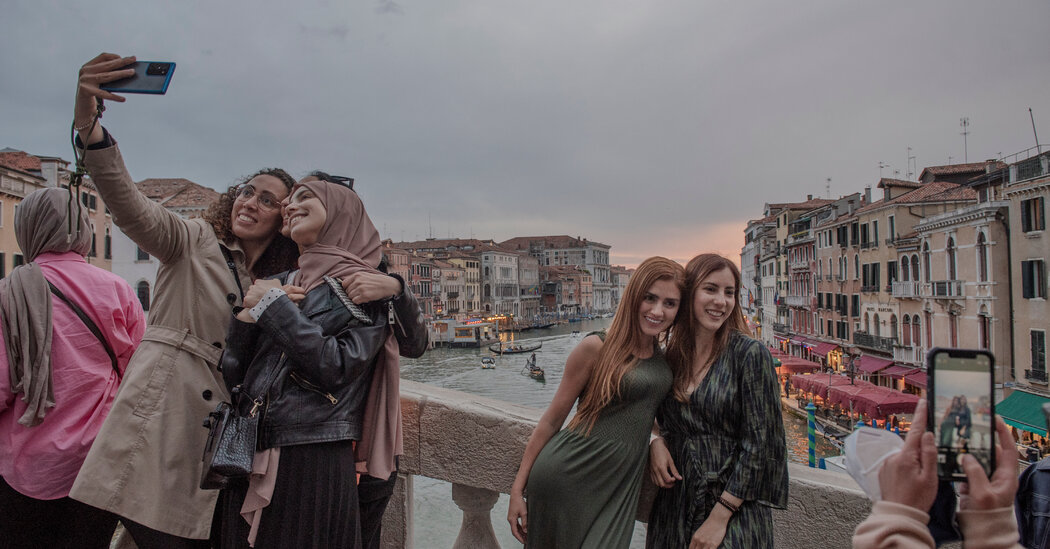On its busiest days, Venice swells with tourists who clog the city’s narrow streets, leave behind piles of garbage and often frustrate locals. So the canal-crossed city is fighting back.
Starting on April 25, and for another 29 days scattered mostly around national holidays and weekends through mid-July, day trippers to the historic part of Venice will have to pay 5 euros, about $5.40, a measure that city officials hope will encourage people to come during less busy times.
All visitors to Venice will also have to register their presence in the city on the specified days, filling out an online form that will help officials gauge how many visitors to expect and strategize about how to handle them.
“It’s not about making money — the costs of the operation are higher than what we’re going to make,” Mayor Luigi Brugnaro told reporters on Thursday as Venetian officials kicked off a global advertising campaign.
Instead, said Michele Zuin, the city official in charge of budgeting and economics, the aim is “to better manage the numbers of tourists and disincentivize mass tourism, which is what creates, let’s say, the difficulty of living in this city.”
Visitors staying overnight in Venice will not have to pay, nor will those traveling there to work, to visit relatives or to study. Anyone born in the city is also exempt, as are minors under 14. And Mr. Brugnaro said there would be no cap on the number of visitors allowed in.
Rising improbably from the waters of the Venetian lagoon, the city is as delicate as it is beautiful, and in recent decades it has struggled to protect a uniqueness that is threatened by climate change and rising seas, as well as by mass tourism.
From 1976 until this year, Italy had allocated funds to help safeguard Venice, and on Thursday, Mr. Brugnaro chided the country’s central government for not renewing that funding. He said he had asked the government for €1.5 billion for the next 10 years to help preserve a city with a unique heritage that requires continuous maintenance.
“We need that financing,” he said.
Occasionally, days have been so busy with tourists that the city has had to limit some streets to one-way pedestrian traffic.
Simone Venturini, the city official in charge of tourism, said of the new measures, “We will be the first city in the world to know exactly how many tourists will come to Venice that day — whether exempt or paying, they have to register.”
After registering on the website, visitors will…
Click Here to Read the Full Original Article at NYT > Travel…
